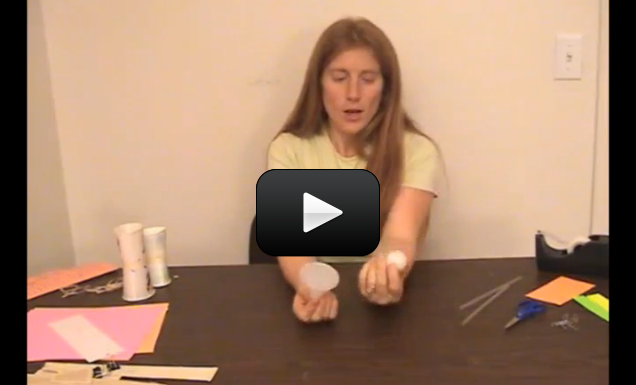As you blow into the funnel, the air under the ball moves faster than the other air surrounding the ball, which generates an area of lower air pressure. The pressure under the ball is therefore lower than the surrounding air which is, by comparison, at a higher pressure. This higher pressure pushes the ball back into the funnel, no matter how hard you blow or which way you hold the funnel. The harder you blow, the more stuck the ball becomes. Cool.
Materials: A funnel and a ping pong ball
Please login or register to read the rest of this content.


Hi Aurora
We had so much fun with this experiment. My son discovered that he could create enough low pressure for the ping pong ball to defy gravity briefly. He pointed the funnel down to the floor and held the ball inside with one finger. He blew as hard and long as he could and only moved his finger once the his breath was strong. As long as his breath was full and strong, the ball stayed briefly aloft inside the funnel. Once his breath waned, the ball would drop. I tried it for the kids next (since I have better breath control haha) and it stayed up several seconds. They all agree that my “co-teacher” Ms Aurora is pretty amazing 🙂
To decrease is to lower. A decrease in air pressure means that the pressure is lowered.
Yes – can you explain it?
i blew it out…it’s not inpossible
What does decrease mean?
There’s not a worksheet at this time, however this is part of a larger series in Flight that you can find here:
https://www.sciencelearningspace2.com/2014/09/science-teleclass-flying-machines/
Hi, can I just ask you if there is a student worksheet for this experiment. Thank you
In this image, both baseballs are moving to the right and the bottom ball’s front edge is spinning upward. The air dragged over the top of the spinning ball moves faster than the air under the ball, so Bernoulli’s principle states that the air pressure below the ball is higher. Therefore the ball feels a force upward called the Magnus force and designated by the red arrow. So the ball actually moves in the direction of the faster moving air, which agrees with Bernoulli’s principle. See the following link for more details on the physics of a curveball.
Faster moving air means less air pressure, which explains the very counterintuitive Bernoulli effect. I have never been able to reconcile, however, the physics of a curve ball in the great American pastime, which can be seen even more easily with a beach ball because of the larger surface area. When travelling with a spin, the ball moves in the direction of *slower *moving air* *(which is intuitive, since it seems like the faster air should “push” the object, but contradicts the Bernoulli effect.
Sure – try this explanation: imagine a room full of ping pong balls all bouncing around on their own. They bounce on the floor, ceiling and walls randomly. Each time a ball bounces off a surface, the surface feels a tiny push. When you add up all the tiny pushes together, that’s what we call ‘pressure’.
The air inside a balloon exerts a pressure on the latex and keeps it in the filled-up shape. If we set up a big fan and blow the ping pong balls down a long hallway, the pressure goes down because now they are moving faster down the hallway and don’t have nearly as much time to push on the walls… so the total pressure decreases.
Does that help?
My 10yo doesn’t understand how increasing the velocity lowers the pressure. Could there be a diagram of areas of pressure change as well as additional explanation with this exp./video such as something like the following: http://hyperphysics.phy-astr.gsu.edu/hbase/pber.html – the Bernoulli equation – ” to balance the equation …. must increase if … decreases”… etc.
We are into our 2nd week of school and have done science most of those days. My 4 boys (ages 12, 10 and 8) are really loving it. What do I like best? Each of my boys can explain the why behind the experiments. My biggest thrill happened yesterday when we did the ping pong ball/funnel experiment. We did the experiment first before watching/listening to you. The boys expected the ball to hover just above the funnel as they blew – of course they were surprised when that didn’t happen! What was my thrill? My 12yo explained the why perfectly! I thought that was so cool!